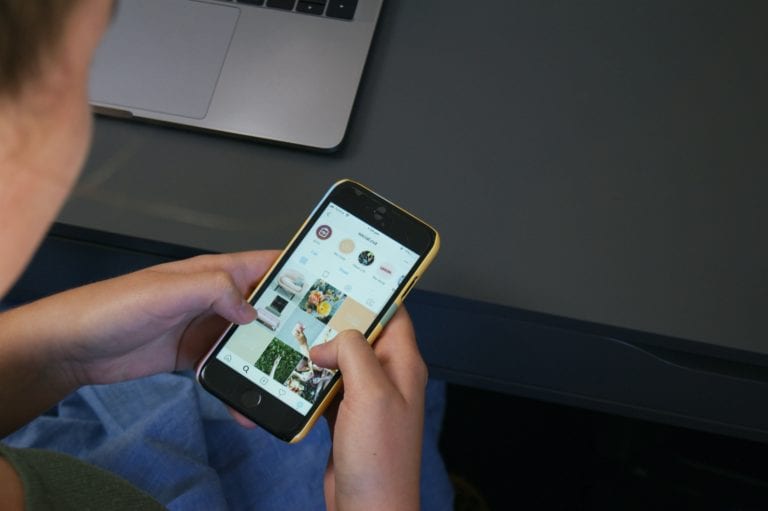What is social media shopping? Is it social media marketing?
Social media shopping, also known as social commerce, refers to the process of selling products directly to consumers on social media. To clarify it differs from social media marketing, which often uses content to drive traffic to websites or boost brand awareness. Rather, it involves having the entire shopping experience occur within the social media platform. For example, brands and businesses can set up online storefronts through the platform where consumers shop directly, rarely having the need to leave the app. They can browse through curated collections by brands, learn about their product details or be redirected to the brand’s website.
With how rampant change is, it does not take much to assume that those figures are much higher now.
How does it shape the way we shop?
It influences our purchasing decision process (especially with social media commerce these days).
Shopping is all about the social experience. I cannot possibly list all the reasons why I, or we, love to shop. However, in essence, it is a lot about learning what the trend is, which brands and products we identify ourselves with and how we fit into society as a whole. We play a part in our social circles to share good recommendations, and vice versa, we would trust it when coming from reliable friends and sources. We discover brands that we would never hear of, and we can easily learn about them instantly.
There is no better time to be shopping online than right now through social media or online shopping. More so, because we have to adapt and accept the norm of living through this digital age alongside the pandemic. With brands pivoting their ecommerce strategies to fit this current situation, shoppers are now being presented with more intentional visual content, which often leads to them to discover more about said product or service. The easy accessibility they provide to product reviews is definitely attractive to us shoppers, which is something that I sure can relate to. After all, that is the appeal of being a social media user!

Here are 4 ways that social media is shaping our buying habits:
1. It grows our love for shopping – with convenience
One of the overarching themes of how and why we shop nowadays, is convenience. If a shop has an online presence, we are more likely to buy from them because we can do so with convenience. To sit cosy at home browsing for discounts and sales, screenshot and save for later or pay with a click of a button, is the norm. We no longer find ourselves in crowded places in-store or waiting in a long line to make our payment. In a time where we’re advised to stay at home, “convenient” shopping is everything.
Plus, we are always on our phones and they seldom leave our sides. Living in this era, where smartphones and connectivity is the expectation, mobile shoppers are highlighted as a growing segment. Statista estimated that by the end of 2021, 73% of e-commerce sales will take place on a mobile device. From online grocery shopping to buying a complete look through an Instagram post, we have plentiful choices to buy what we want with the click of a button. Social media shopping features of shoppable posts, product tags paired with swipe up links are in place to make our lives easier.

2. It becomes a source for product discovery
Social media has influenced the way we like to discover new brands, places, products and so on. Many of us turn to social media or the internet for help in our search process. Did you know? 70% of shopping enthusiasts turn to instagram for product discovery. Admittedly, I have done that too, personally scouting the feeds and stories of people I follow for their favourite skin care products they recommend. When we are on social media, ideas and inspiration can be sparked by looking at our feeds or sponsored posts. Since our brains are hardwired for visual content, it is no wonder we respond well to social media content. Subsequently, it leads us into shopping, saving or sharing.

3. Our reliance on it for product research
Similarly, social media has also changed the way we talk. We become more aware of products, brands and trends! People nowadays are more savvy and in the know of happening trends, through the power of social media. And so word of mouth goes a long way,
Search Engine Watch wrote that 81% of consumers’ purchasing choices are influenced by their friends’ posts on social media.
Nowadays, people have learnt to be more smart with their buying decision making. With more information readily available, we learn to research more thoroughly. With so many voices on social media, it has become our go-to for recommendations, specific information for product research and advice.
As we stumble upon a product we think we like, we take into account different considerations, most of which are in the hands of past users or friends. Reviews matter, and people know it.
“According to the Global Web Index, 42% of internet users look for information about products on social networks.”
There is a trust factor with other users and friends. We want to hear about their experience with a brand or product firsthand before we decide on our next steps, and we’re likely to count on it. If a brand’s customer service is good, you’d hear about it in the form of positive ratings and reviews. On the other hand, the power of reviews over a poor experience could leave a brand’s image and in trouble.
Here are some interesting data around reviews:
- 82% of consumers read online reviews of local businesses.
- 91% of consumers say positive reviews make them more likely to use a business.
- 76% trust online reviews as much as recommendations from family and friends.
- 93% of online shoppers say that a review can make or break their decision.
- 54% of social browsers use social media to research products.
4. Social proof is a greater force for buying decisions
Naturally as social beings, we like the feeling of belonging in a greater community. We gain a lot from what is shared online, from our peers and those we aspire to be. There is power and influence in word of mouth sharing.
Gen Z and Millennials are more likely to be influenced, with 84% of millennials saying user-generated content from strangers has at least some influence on how they spend their money.
It is through our social networks that we find “social proof”, reinforcing or diminishing our perception that a brand is good and worthwhile. Knowing this, brands should not let their guard down about giving mediocre service or reducing their quality of goods.






